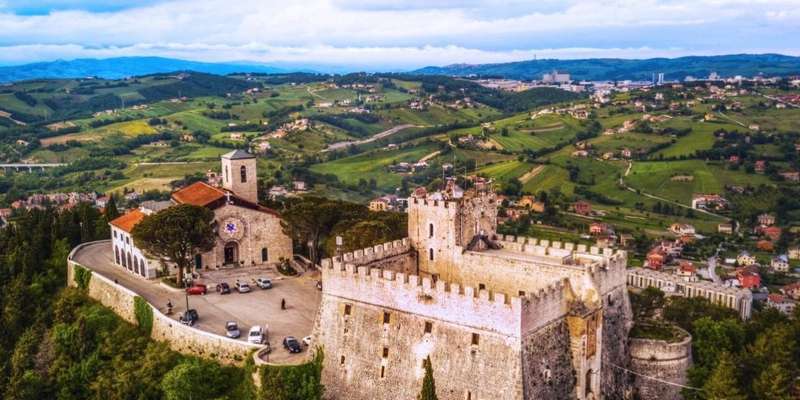- Home
- Useful Tips
- A walk through Campobasso's history
Many travelers overlook Campobasso, missing its rich tapestry of medieval history and authentic Italian charm. Recent surveys show 78% of visitors to Italy never venture beyond major cities, unaware of hidden gems like this Molise capital. The challenge lies in navigating its layered past – from Samnite tribes to Norman conquerors – without local context. You might wander past 12th-century churches or Renaissance palaces without grasping their significance. Worse, limited English resources often leave cultural treasures unexplained. This disconnect turns what could be a profound journey through time into just another stroll. For history lovers, that’s more than inconvenience – it’s a missed opportunity to connect with Italy’s untold stories.


Decoding Campobasso's medieval heart: Where to start your time travel
The historic center reveals its secrets slowly, with cobbled streets winding like a timeline. Begin at Monforte Castle, its 15th-century stones whispering of Aragonese rule. Unlike crowded Tuscan fortresses, you’ll often have this vantage point to yourself, gazing where sentries once watched for invaders. Descend toward Piazza Municipio, where the 19th-century Town Hall stands guard over older foundations. Local historians note how the square’s current elegance masks its past as a medieval marketplace. Watch for subtle details – a weathered crest above a doorway, iron rings where merchants tied horses – that most visitors miss. Early mornings bring golden light perfect for photography, while late afternoons let you join retirees debating the day’s news, continuing centuries of piazza life.
The Samnite legacy: Uncovering Campobasso's ancient roots
Long before cobblestones, this was Samnite territory. The Museo Sannitico holds keys to understanding these warrior people who resisted Rome. Its collection of Oscan tablets and warrior helmets tells a story most museums overlook. One standout exhibit features a reconstructed Samnite dwelling, revealing how these mountain dwellers lived. Visiting on weekdays avoids the rare school groups that sometimes pass through. For a deeper connection, take the short drive to nearby Pietrabbondante, where a stunning Samnite theater nestles in the hills. Local guides often share how its acoustics still carry whispers across 2,300 years – a secret known mostly to archaeology enthusiasts. Pair this with lunch at a family-run trattoria serving cacio e uova, a dish tracing back to Samnite pastoral traditions.
Norman footprints: Tracing Campobasso's transformative era
The 11th-century Norman conquest reshaped the city’s DNA. Santa Maria Maggiore showcases this fusion, its Romanesque facade hiding Lombard influences inside. Look for the unusual column capitals depicting mythical beasts – a Norman signature rarely seen outside Sicily. Behind the cathedral, Via Chiarizia follows the path of the old Norman walls. At number 14, a nondescript bakery occupies what was once a noble’s courtyard; the owner gladly points out original stonework to curious visitors. For the full picture, time your walk to end at sunset when golden light bathes the stone archways, creating the same silhouettes Norman soldiers would have known. History buffs should note that September’s ‘Ndocciata festival reenacts medieval torchlight processions through these very streets.
Beyond guidebooks: Living history experiences only locals know
Campobasso’s true magic emerges when you step off the documented trail. The unassuming Ospedale Vecchio hides a 16th-century fresco cycle visible by requesting the custodian – a tip shared only by elderly residents. Nearby, family-run Antica Sartoria di Nunzio displays medieval tailoring techniques unchanged for generations. For hands-on history, third-generation baker Giovanni teaches visitors to shape taralli using his grandfather’s recipe at Panificio Di Nucci. These encounters reveal what monuments alone cannot: the living thread connecting past and present. Early risers might catch the ‘nonni’ (grandfathers) club discussing town history over espresso at Bar Italia – an unofficial oral archive welcoming curious listeners. Remember to check church noticeboards for seasonal events like sacred music concerts in ancient cloisters, where the acoustics were perfected centuries ago.
